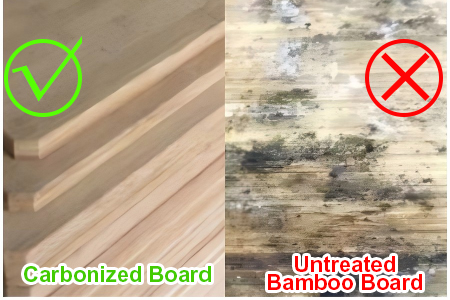Bamboo crafts are surging in popularity for their eco-friendly appeal and natural aesthetics. However, uneven quality plagues the market. Discover 5 professional techniques to identify durable, artisan-level bamboo products while avoiding cheap imitations!
Tip 1: Inspect the Bamboo Material – Foundation of Quality
Key Checkpoints
Age & Cutting Position: Premium bamboo requires 3+ years of growth. Dense fibers from root to mid-section ensure durability (avoid crack-prone top sections).
Treatment Process: Look for anti-mold/anti-bug treatments like carbonization or steam-boiling. Reject pieces with visible insect holes or mildew.
Eco-Certifications: Prioritize FSC-certified bamboo or natural lacquer-free finishes.
Red Flags: Beware of chemical-dyed "bargain bamboo". Sniff test – strong chemical odors indicate low-grade treatments.

Tip 2: Decode Craftsmanship – Details Reveal Truth
Key Checkpoints
Handmade Authenticity: Genuine handcrafting shows slight texture variations (e.g., manual knots in woven edges), unlike machine-pressed uniformity.
Joint Techniques: Check tight mortise-and-tenon connections (glue-heavy joints crack easily).
Surface Finish: High-end pieces undergo multi-stage polishing – smooth, splinter-free surfaces should reveal natural bamboo grain.
Pro Insight: Traditional hexagonal weaving patterns require 20+ years of artisan mastery. Uneven patterns may indicate rushed production.
Tip 3: Test Functionality – Where Beauty Meets Practicality
Key Checkpoints
Load-Bearing Test: Gently press bamboo baskets/shelves. Quality bamboo rebounds instantly; inferior products deform permanently.
Water Resistance: No bamboo is fully waterproof! For kitchens/bathrooms, choose deep-carbonized or beeswax-coated items.
Size Verification: Measure your space before buying storage baskets/tea trays. Request customization (e.g., drilled holes, resizing).
Smart Solution: Ask sellers for usage scenario photos/videos to visualize real-life applications.
Tip 4: Master Maintenance – Extend Lifespan Effortlessly
Key Checkpoints
Cleaning Protocol: Wipe with dry cloths only. For deep cleaning, use damp cloths by immediate drying.
Humidity Control: Maintain 40-60% humidity. Use humidifiers in dry climates; ventilate damp areas.
Repair Services: Choose brands offering free repairs (loose weaves, minor cracks).
Pro Tip: Season bamboo annually with food-grade mineral oil (link to your "[Brand] Bamboo Care Guide" for retention boost).
Tip 5: Choose Trusted Sources – 80% of Quality Assurance
Key Checkpoints
Traceability: Reputable sellers disclose bamboo origins (e.g., Fujian Wuyi Mountain bamboo) and artisan profiles.
Long-Term Reviews: Focus on 6+ month user feedback about warping/cracking issues.
Guarantees: Legitimate brands provide 1-year warranties and damage-protected shipping.
Bamboo products are not only beautiful and practical, but also can reduce environmental pollution, but some merchants choose inferior bamboo to pretend to be good bamboo in order to make more profits, which seriously damages the health of customers.
Mastering the above five skills can basically allow you to avoid most of the inferior products. Of course, the easiest way is to choose a strong factory: for example,
we have 20 years of experience in making bamboo, and adhere to the principle of customer first. No matter how big or small the order is, we try our best to do our best.
I hope this article can help you. Thank you~


 Call At :
Call At :
 Email Us :
Email Us :
 Address :
Address :
